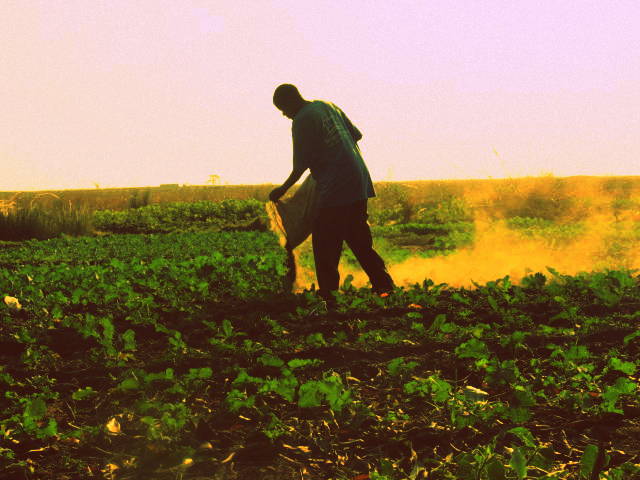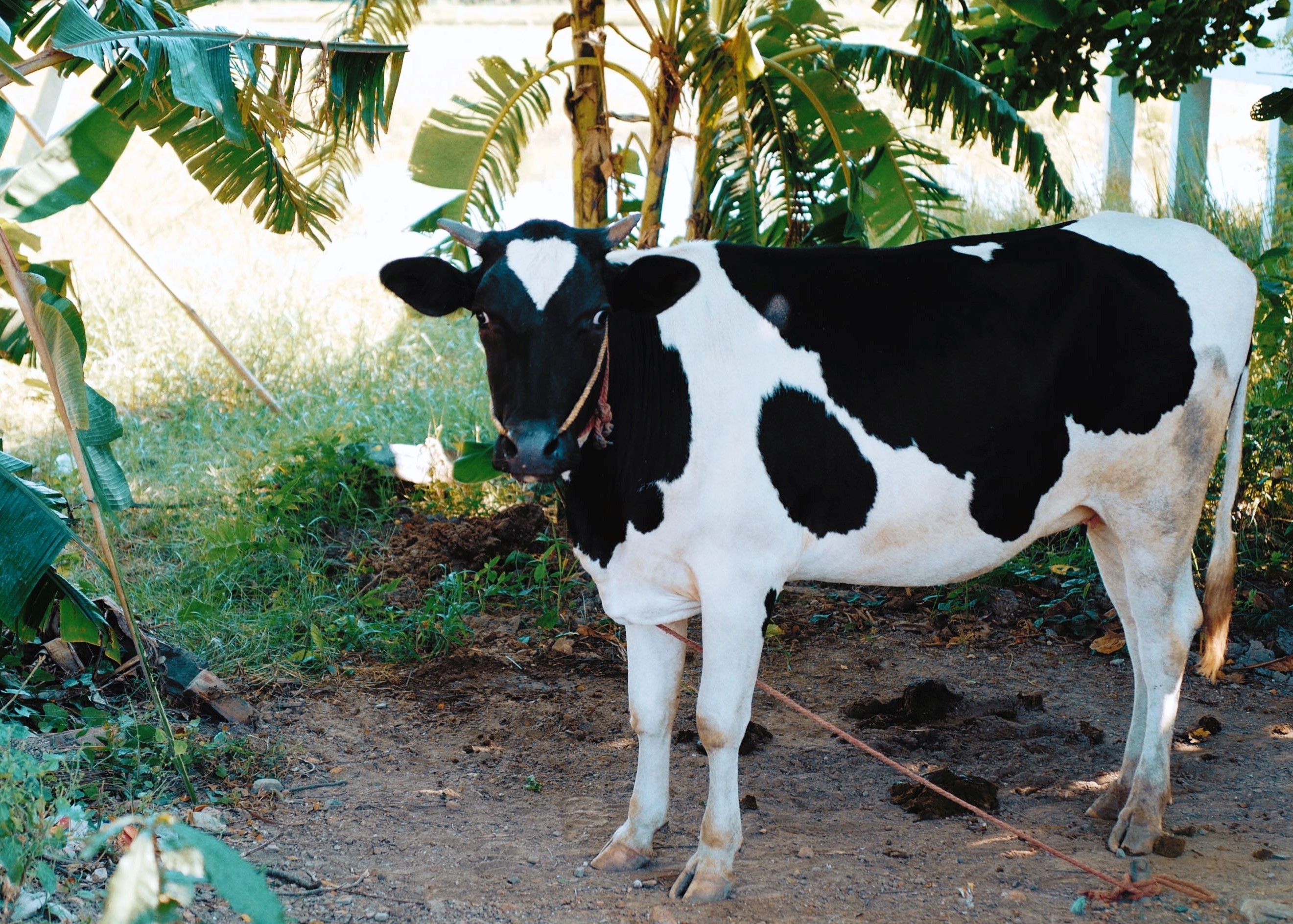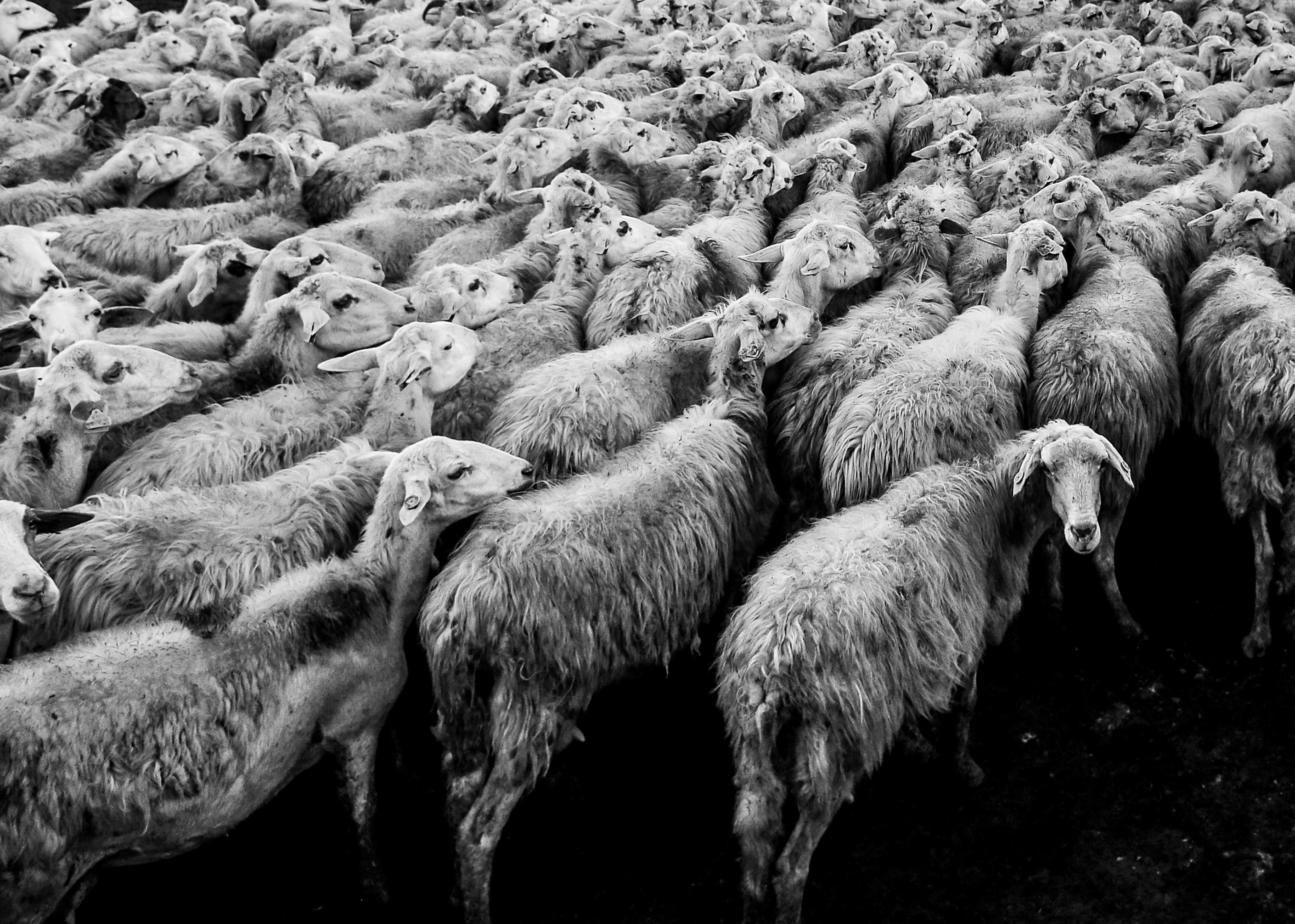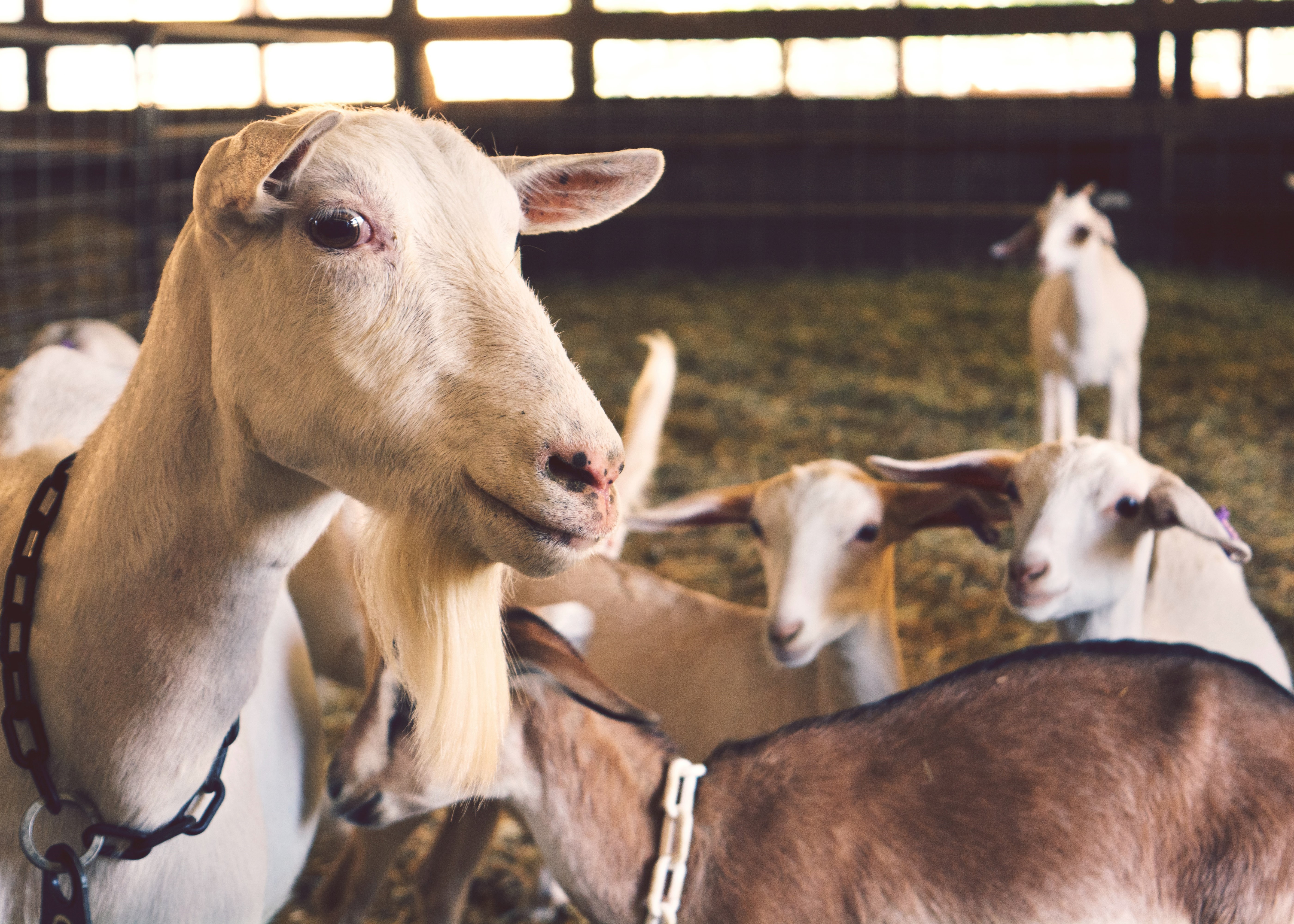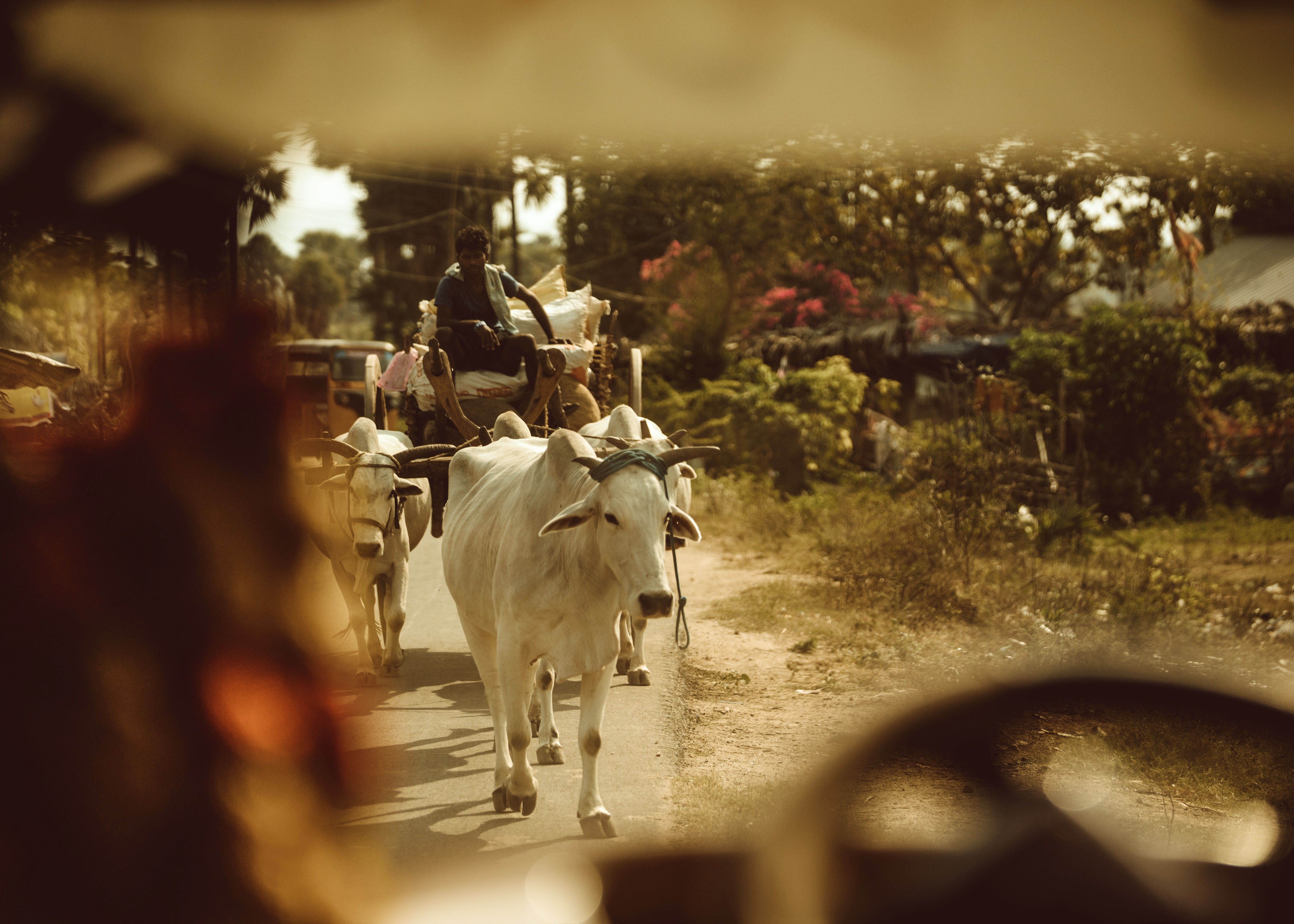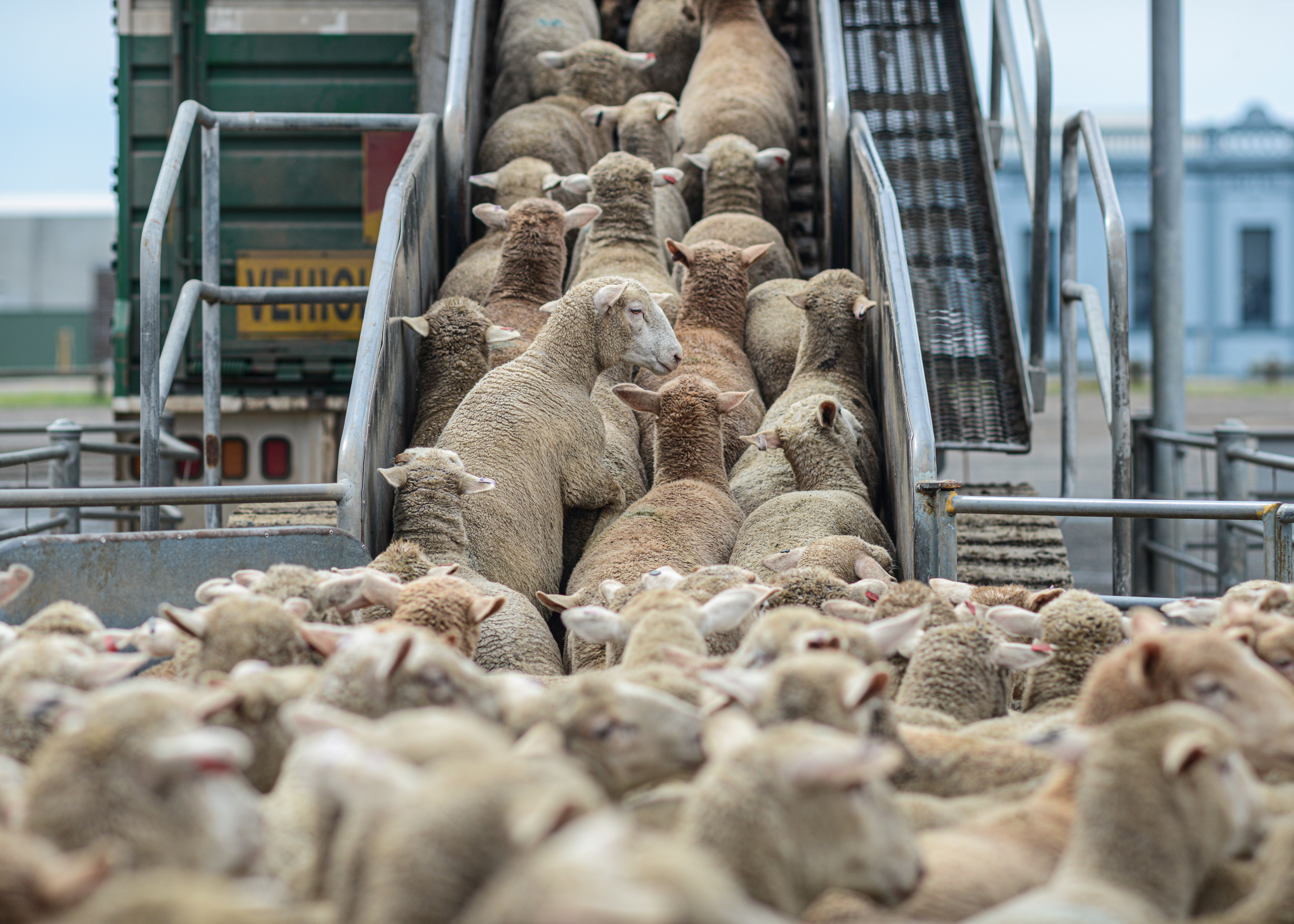Dairy
Although all mammals produce milk to nourish their young, the cow is predominantly
used throughout the world to produce milk and milk products for human consumption.
Other animals used to a lesser extent for this purpose include sheep, goats, camels,
buffaloes, yaks, reindeer, horses and donkeys.[57]
All these animals have been domesticated over the centuries, being bred for such
desirable characteristics as fecundity, productivity, docility and the ability to
thrive under the prevailing conditions. Whereas in the past, cattle had multiple
functions, modern dairy cow breeding has resulted in specialised Holstein
Friesian-type animals that produce large quantities of milk economically. Artificial
insemination is widely available to allow farmers to select for the particular traits
that suit their circumstances.[58]
Whereas in the past, cows were kept in small herds on family farms, grazing pastures
and being fed hay in winter, nowadays there is a trend towards larger herds, more
intensive systems, the feeding of silage and "zero grazing", a system where grass is
cut and brought to the cow, which is housed year-round.[59] In many communities, milk
production is only part of the purpose of keeping an animal which may also be used as
a beast of burden or to draw a plough, or for the production of fibre, meat and
leather, with the dung being used for fuel or for the improvement of soil fertility.
Sheep and goats may be favoured for dairy production in climates and conditions that
do not suit dairy cows.[57]
Meat
Meat, mainly from farmed animals, is a major source of dietary protein around the
world, averaging about 8% of man's energy intake. The actual types eaten depend on
local preferences, availability, cost and other factors, with cattle, sheep, pigs and
goats being the main species involved. Cattle generally produce a single offspring
annually which takes more than a year to mature; sheep and goats often have twins and
these are ready for slaughter in less than a year; pigs are more prolific, producing
more than one litter of up to about 11[60] piglets each year.[61] Horses, donkeys,
deer, buffalo, llamas, alpacas, guanacos and vicunas are farmed for meat in various
regions. Some desirable traits of animals raised for meat include fecundity,
hardiness, fast growth rate, ease of management and high food conversion efficiency.
About half of the world's meat is produced from animals grazing on open ranges or on
enclosed pastures, the other half being produced intensively in various
factory-farming systems; these are mostly cows, pigs or poultry, and often reared
indoors, typically at high densities.[62]
Poultry
Poultry, kept for their eggs and for their meat, include chickens, turkeys, geese and
ducks. The great majority of laying birds used for egg production are chickens.
Methods for keeping layers range from free-range systems, where the birds can roam as
they will but are housed at night for their own protection, through semi-intensive
systems where they are housed in barns and have perches, litter and some freedom of
movement, to intensive systems where they are kept in cages. The battery cages are
arranged in long rows in multiple tiers, with external feeders, drinkers, and egg
collection facilities. This is the most labour saving and economical method of egg
production but has been criticised on animal welfare grounds as the birds are unable
to exhibit their normal behaviours.[63]
In the developed world, the majority of the poultry reared for meat is raised indoors
in big sheds, with automated equipment under environmentally controlled conditions.
Chickens raised in this way are known as broilers, and genetic improvements have meant
that they can be grown to slaughter weight within six or seven weeks of hatching.
Newly hatched chicks are restricted to a small area and given supplementary heating.
Litter on the floor absorbs the droppings and the area occupied is expanded as they
grow. Feed and water is supplied automatically and the lighting is controlled. The
birds may be harvested on several occasions or the whole shed may be cleared at one
time.[64]
Aquaculture
Aquaculture has been defined as "the farming of aquatic organisms including fish,
molluscs, crustaceans and aquatic plants and implies some form of intervention in the
rearing process to enhance production, such as regular stocking, feeding, protection
from predators, etc. Farming also implies individual or corporate ownership of the
stock being cultivated."[67] In practice it can take place in the sea or in
freshwater, and be extensive or intensive. Whole bays, lakes or ponds may be devoted
to aquaculture, or the farmed animal may be retained in cages (fish), artificial
reefs, racks or strings (shellfish). Fish and prawns can be cultivated in rice
paddies, either arriving naturally or being introduced, and both crops can be
harvested together.[68]
Fish hatcheries provide larval and juvenile fish, crustaceans and shellfish, for use
in aquaculture systems. When large enough these are transferred to growing-on tanks
and sold to fish farms to reach harvest size. Some species that are commonly raised in
hatcheries include shrimps, prawns, salmon, tilapia, oysters and scallops. Similar
facilities can be used to raise species with conservation needs to be released into
the wild, or game fish for restocking waterways. Important aspects of husbandry at
these early stages include selection of breeding stock, control of water quality and
nutrition. In the wild, there is a massive amount of mortality at the nursery stage;
farmers seek to minimise this while at the same time maximising growth rates.[69]
Insects
Bees have been kept in hives since at least the First Dynasty of Egypt, five thousand
years ago,[70] and man had been harvesting honey from the wild long before that. Fixed
comb hives are used in many parts of the world and are made from any locally available
material.[71] In more advanced economies, where modern strains of domestic bee have
been selected for docility and productiveness, various designs of hive are used which
enable the combs to be removed for processing and extraction of honey. Quite apart
from the honey and wax they produce, honey bees are important pollinators of crops and
wild plants, and in many places hives are transported around the countryside to assist
in pollination.[72]
Sericulture, the rearing of silkworms, was first adopted by the Chinese during the
Shang dynasty.[73] The only species farmed commercially is the domesticated silkmoth.
When it spins its cocoon, each larva produces an exceedingly long, slender thread of
silk. The larvae feed on mulberry leaves and in Europe, only one generation is
normally raised each year as this is a deciduous tree. In China, Korea and Japan
however, two generations are normal, and in the tropics, multiple generations are
expected. Most production of silk occurs in the Far East, with a synthetic diet being
used to rear the silkworms in Japan.[74]
Insects form part of the human diet in many cultures.[75] In Thailand, crickets are
farmed for this purpose in the north of the country, and palm weevil larvae in the
south. The crickets are kept in pens, boxes or drawers and fed on commercial pelleted
poultry food, while the palm weevil larvae live on cabbage palm and sago palm trees,
which limits their production to areas where these trees grow.[76] Another delicacy of
this region is the bamboo caterpillar, and the best rearing and harvesting techniques
in semi-natural habitats are being studied.[76]
